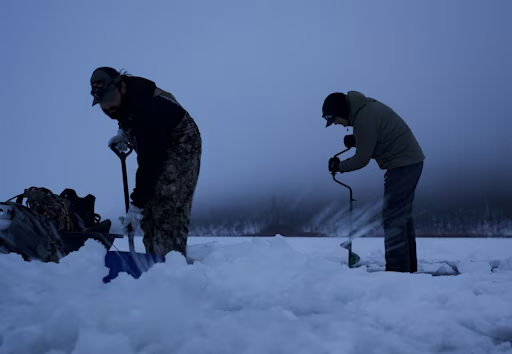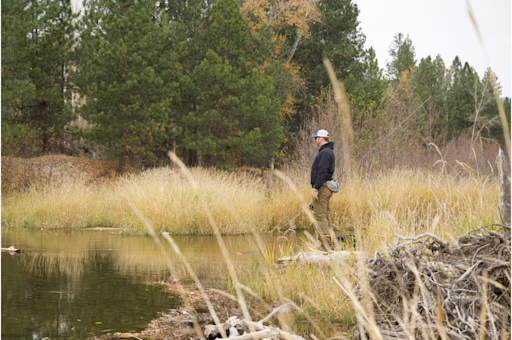A Beginner’s Guide to Fishing: How to Land Your First Catch
Take a look at this detailed guide about fishing for the first time, picking the right gear, and safely handling your catch.
Share this article

Experienced anglers often recall the excitement of catching their first fish. Whether it’s through photos, stories, or vivid memories, we remember where we were, what species we caught, and the thrill of that first tight line. The journey from a novice to an experienced angler is often shaped by mentorship—whether from parents, grandparents, or seasoned fishermen. However, for those venturing out on their own, this beginner’s guide will walk you through everything you need to know—from getting your fishing license to proper catch and release techniques.
1. Do You Need a Fishing License? (And How to Get One)

A fishing license is essential for anyone planning to fish legally in public waters. Under the Sport Fish Restoration Act, which was passed in 1950, anglers are required to purchase a fishing license in order to support conservation efforts. The age requirement varies by state (usually 16 or older). Check with your state’s fishing regulations to find out the exact rules for your area.
Once you’ve obtained your base fishing license, remember to check for any additional licenses or permits you may need, such as a saltwater fishing permit or special report cards for certain species.
This page from our friends at Take Me Fishing will help you purchase the correct license for your state:Get a Fishing License
2. Know Your Water and Target Species
As a beginner, it’s best to start with local ponds, small lakes, or creeks—these are simpler and more forgiving waters. Avoid large, deep bodies of water that may be overwhelming due to the various fishing conditions. Small bodies of water also tend to have abundant species that are easier for new anglers to target, such as bluegill, bass, crappie, and sunfish.
Before heading out, take the time to research which species live in your local waters. Fishbrain, for example, offers helpful insights on local species and the best fishing techniques to use for each.

3. Choosing Your First Rod and Reel
Selecting the right fishing rod and reel is crucial, but don’t worry—beginner gear doesn’t have to be expensive. A spinning rod and reel combo (6-7 feet long) is perfect for most novice anglers and can be found for under $50. Avoid casting reels initially, as they require more skill and experience.
If you’re uncertain about what to buy, visit your local tackle shop or consult fellow anglers on Fishbrain for recommendations.
4. Picking the Right Setup for Beginners
For your line, choose monofilament in the 6-10lb range. It’s affordable and versatile for most species, whether you’re fishing for largemouth bass, trout, or bluegill.
Bait Fishing: If you’re using live or artificial bait, you’ll need additional equipment like weights (for sinking bait) and floats (to signal when a fish bites).
Lure Fishing: Lures usually come pre-weighted and do not require floats. You’ll need to experiment with different retrieval speeds to see what attracts fish best.
5. Choosing the Best Bait for Beginners
Live Bait
For first-time anglers, live bait like nightcrawlers, crickets, crawfish and minnows are often the most effective. You can buy live bait at a bait shop, or catch your own.
Artificial Bait
If you prefer to use artificial lures, they come in many shapes and sizes to mimic different types of prey. These baits can last longer than live bait, but you may need to experiment with different types (e.g., soft plastics, hard-body lures) and colors to find what works best.
When choosing hooks, remember: larger hooks tend to catch bigger fish, while smaller hooks are more effective for catching a larger quantity of fish.

6. Finding the Perfect Fishing Spot
If you're not sure where to fish, Fishbrain offers a comprehensive map with detailed information about local fishing spots. By searching for your city, you can find the best fishing locations, see what other anglers are catching, and identify the most successful baits and lures.
Use the “Catches” layer to find spots where other anglers have had success, or check the “Parks and Government Lands” layer to find public access areas for fishing.
6. Cast and wait

And of course, we’ve saved the best part for last - catching your fish! For beginners, it’s best to fish on a dock or in deep waters. This is when reading water comes into play. Panfish usually stay close to docks and boats - making it easier to catch them since they usually swim in a pack. You might even see them swimming around beneath you. In that case, you should open your bail (the semicircular, metal arm on your spinning reel that will pick up the line after a cast) and let your bait fall in the water.
Once your bait is in the water, your bobber should be partially submerged. If it is fully submerged, your bobber is either too small or your weight too heavy. If your bobber starts to move from side to side or up and down, wait a few seconds, raise your rod tip to set the hook, and then begin to reel your line in. If you’re catching a smaller fish, it might not be so obvious that it bit the bait, this is why it’s important to wait a few seconds before reeling it in.
7.How to Cast, Wait, and Reel in Your Catch
Casting and waiting are an essential part of fishing. For beginners, focus on fishing near structure, like docks, sunken trees, or rocky areas where fish tend to congregate. This makes it easier to catch fish like panfish, which often swim in schools near structures.
Bait Fishing
Cast your bait out, wait for the bobber to move (either by sinking or side-to-side), and then set the hook by raising your rod tip.
Lure Fishing
Cast your lure near structures and reel it in slowly. Experiment with different retrieval speeds to see what entices fish to bite. If you feel resistance, set the hook by snapping the rod tip upward.
Catch and Release Techniques

After you land your first catch, it’s time for the most important part: catch and release. To minimize harm to the fish:
Avoid removing the fish from the water unless necessary.
Use a rubber net to handle fish gently, as it minimizes damage to their scales and slime coating.
For fish with sharp spines, like bluegill or sunfish, use forceps to remove hooks. Once you’ve taken a quick photo of your catch (don’t forget to log it on Fishbrain), gently release the fish back into the water. If the fish seems stressed, hold it gently in the water until it swims away.
9. Repeat the Process and Keep Fishing

Congratulations! You've just landed your first fish and completed your first fishing adventure. Now, check your knots for fraying, restock your bait, and cast out again.
You are now officially an angler. Welcome to the club.
If you havent experienced the #1 fishing app worldwide, make sure and check out Fishbrain to see all the fish data, fishing spots, weather conditions you've been missing out on plus much more. Note: fishing is not a form of treatment for depression, nor is it a substitute for any medicine prescribed by a doctor. Its effects can help you navigate through periods of depression, but it's important to also seek professional help. This world needs more anglers in it and not one less.

Download the Fishbrain app and access the best fishing spots in your area
Related blog posts
Master the hardwater season with advanced ice fishing tips . Learn how to find fish faster, refine your search and adjust presentations to catch more fish all winter long.

Your guide to Victoria’s best fish to catch in rivers, lakes, and coastal waters. Learn prime species, fishing tips, and key regulations

Learn how fish adapt as water temperatures cool from autumn to winter, including changes in behavior, metabolism, and habitat that help them survive.




